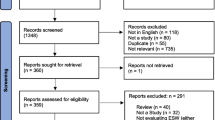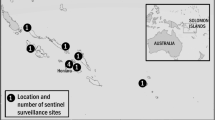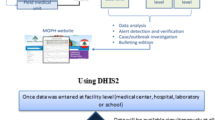Abstract
The coronavirus disease 2019 (COVID-19) pandemic has led to greater attention being given to infectious disease surveillance systems and their notification functionalities. Although numerous studies have explored the benefits of integrating functionalities with electronic medical record (EMR) systems, empirical studies on the topic are rare. The current study assessed which factors influence the effectiveness of EMR-based reporting systems (EMR-RSs) for notifiable disease surveillance. This study interviewed staff from hospitals with a coverage that represented 51.39% of the notifiable disease reporting volume in Taiwan. Exact logistic regression was employed to determine which factors influenced the effectiveness of Taiwan’s EMR-RS. The results revealed that the influential factors included hospitals’ early participation in the EMR-RS project, frequent consultation with the information technology (IT) provider of the Taiwan Centers for Disease Control (TWCDC), and retrieval of data from at least one internal database. They also revealed that using an EMR-RS resulted in more timely, accurate, and convenient reporting in hospitals. In addition, developing by an internal IT unit instead of outsourcing EMR-RS development led to more accurate and convenient reporting. Automatically loading the required data enhanced the convenience, and designing input fields that may be unavailable in current databases to enable physicians to add data to legacy databases also boosted effectiveness of the reporting system.





Similar content being viewed by others
Data Availability
The datasets used during the current study are not publicly available, as stipulated in our participant consent forms. However, they are available from the corresponding authors upon reasonable request.
References
Benson FG, Musekiwa A, Blumberg L, Rispel LC (2016) Survey of the perceptions of key stakeholders on the attributes of the South African Notifiable Diseases Surveillance System. BMC Public Health 16:1120. https://doi.org/10.1186/s12889-016-3781-7
Jelastopulu E, Merekoulias G, Alexopoulos EC (2010) Underreporting of communicable diseases in the prefecture of Achaia, western Greece, 1999–2004 - missed opportunities for early intervention. Euro Surveill 15:19579. https://doi.org/10.2807/ese.15.21.19579-en
John TJ, Rajappan K, Arjunan KK (2004) Communicable diseases monitored by disease surveillance in Kottayam district, Kerala state, India. Indian J Med Res 120:86–93.
Perry HN, McDonnell SM, Alemu W, Nsubuga P, Chungong S, Otten MW, Jr., et al. (2007) Planning an integrated disease surveillance and response system: a matrix of skills and activities. BMC Med 5:24. https://doi.org/10.1186/1741-7015-5-24
Birkhead GS, Klompas M, Shah NR (2015) Uses of electronic health records for public health surveillance to advance public health. Annu Rev Public Health 36:345–59. https://doi.org/10.1146/annurev-publhealth-031914-122747
Groseclose SL, Buckeridge DL (2017) Public Health Surveillance Systems: Recent Advances in Their Use and Evaluation. Annu Rev Public Health 38:57–79. https://doi.org/10.1146/annurev-publhealth-031816-044348
Silk BJ, Berkelman RL (2005) A review of strategies for enhancing the completeness of notifiable disease reporting. J Public Health Manag Pract 11:191–200. https://doi.org/10.1097/00124784-200505000-00003
Overhage JM, Grannis S, McDonald CJ (2008) A comparison of the completeness and timeliness of automated electronic laboratory reporting and spontaneous reporting of notifiable conditions. Am J Public Health 98:344–50. https://doi.org/10.2105/ajph.2006.092700
Klompas M, Murphy M, Lankiewicz J, McVetta J, Lazarus R, Eggleston E, et al. (2011) Harnessing electronic health records for public health surveillance. Online J Public Health Inform 3. https://doi.org/10.5210/ojphi.v3i3.3794
Chiolero A, Santschi V, Paccaud F (2013) Public health surveillance with electronic medical records: at risk of surveillance bias and overdiagnosis. Eur J Public Health 23:350–1. https://doi.org/10.1093/eurpub/ckt044
Jian SW, Chen CM, Lee CY, Liu DP (2017) Real-Time Surveillance of Infectious Diseases: Taiwan’s Experience. Health Secur 15:144–53. https://doi.org/10.1089/hs.2016.0107
Hu YP, Li CL, Liu YL, Chang CM, Chuang JH (2016) Reporting notifiable infectious diseases by using hospital electronic medical record systems: An effectiveness assessment. The Journal of Taiwan Association for Medical Informatics 25:23–31.
Eggleston EM, Weitzman ER (2014) Innovative uses of electronic health records and social media for public health surveillance. Curr Diab Rep 14:468. https://doi.org/10.1007/s11892-013-0468-7
Chute CG, Koo D (2002) Public health, data standards, and vocabulary: crucial infrastructure for reliable public health surveillance. J Public Health Manag Pract 8:11–7. https://doi.org/10.1097/00124784-200205000-00003
Klompas M, McVetta J, Lazarus R, Eggleston E, Haney G, Kruskal BA, et al. (2012) Integrating clinical practice and public health surveillance using electronic medical record systems. Am J Public Health 102 Suppl 3:S325-32. https://doi.org/10.2105/ajph.2012.300811
Wei F, Ye W, Huan GX, Tian X, Lan JY, Yu WH (2016) Study of management of auto-reporting of communicable diseases based on electronic medical records in Shanghai. Disease Surveillance 31:341–5.
Madhavan S, Bastarache L, Brown JS, Butte AJ, Dorr DA, Embi PJ, et al. (2021) Use of electronic health records to support a public health response to the COVID-19 pandemic in the United States: a perspective from 15 academic medical centers. J Am Med Inform Assoc 28:393–401. https://doi.org/10.1093/jamia/ocaa287
The Harvard Medical School’s Department of Population Medicine at the Harvard Pilgrim Health Care Institute and the Massachusetts Department of Public Health. Electronic medical record support for public health 2017 [Available from: http://www.esphealth.org/.
Lazarus R, Klompas M, Campion FX, McNabb SJ, Hou X, Daniel J, et al. (2009) Electronic Support for Public Health: validated case finding and reporting for notifiable diseases using electronic medical data. J Am Med Inform Assoc 16:18–24. https://doi.org/10.1197/jamia.M2848
Taiwan Centers for Disease Control. Information on the epidemic prevention cloud subsidy program in 2014–2016 [Available from: https://www.cdc.gov.tw/En/Category/MPage/Ao2lniHMbkRUFGCzycakkg.
Koplan JP, Milstein R, Wetterhall S (1999) Framework for program evaluation in public health. MMWR Recomm Rep 48:1–40.
Brousselle A, Champagne F (2011) Program theory evaluation: Logic analysis. Eval Program Plann 34:69–78. https://doi.org/10.1016/j.evalprogplan.2010.04.001
Lynn MR (1986) Determination and quantification of content validity. Nurs Res 35:382–5.
Polit DF, Beck CT, Owen SV (2007) Is the CVI an acceptable indicator of content validity? Appraisal and recommendations. Res Nurs Health 30:459–67. https://doi.org/10.1002/nur.20199
Hair JF, Black WC, Babin BJ, Anderson RE. Multivariate data analysis: Vectors; 2010.
Bland JM, Altman DG (1997) Cronbach’s alpha. Bmj 314:572. https://doi.org/10.1136/bmj.314.7080.572
Nunnally JC. Psychometric theory 3E: Tata McGraw-hill education; 1994.
Liu Q, Zeng Q, Zhou Y (2003) Exact logistic regression and its performance to SAS system. Zhonghua liu Xing Bing xue za zhi = Zhonghua Liuxingbingxue Zazhi 24:725–8.
Mehta CR, Patel NR (1995) Exact logistic regression: theory and examples. Statistics in medicine 14:2143–60.
Tseng CJ, Chiu CY, Sun PR, Lu MC, Li YC. Study of benefit evaluation for applying hospital’s electronic medical records to the communicable diseases reporting system. In: Department of Disease Control MoHaW, editor. 2011.
Tomines A, Readhead H, Readhead A, Teutsch S (2013) Applications of electronic health information in public health: uses, opportunities & barriers. EGEMS (Wash DC) 1:1019. https://doi.org/10.13063/2327-9214.1019
Kukafka R, Ancker JS, Chan C, Chelico J, Khan S, Mortoti S, et al. (2007) Redesigning electronic health record systems to support public health. Journal of Biomedical Informatics 40:398–409. https://doi.org/10.1016/j.jbi.2007.07.001
Huang EW, Chang HY, Wang TH, Yao XH, Chiou SF, Chang CM, et al. (2013) Design and implementation of an innovation epidemic information exchange platform. The Journal of Taiwan Association for Medical Informatics 22:1–13.
Nnebue CC, Onwasigwe CN, Ibeh CC, Adogu PO (2013) Effectiveness of data collection and information transmission process for disease notification in Anambra State, Nigeria. Niger J Clin Pract 16:483–9. https://doi.org/10.4103/1119-3077.116894
Declich S, Carter AO (1994) Public health surveillance: historical origins, methods and evaluation. Bull World Health Organ 72:285–304.
Abdool Karim SS, Dilraj A (1996) Reasons for under-reporting of notifiable conditions. S Afr Med J 86:834–6.
Acknowledgements
The authors would like to thank Professor Kuan-Chia Lin for enhancing the quality of the statistical analysis, as well as Daniel Shaw and Wallace Academic Editing for their assistance in proofreading and editing, respectively.
Funding
This research did not receive any grants from public, commercial, or nonprofit funding agencies.
Author information
Authors and Affiliations
Contributions
Li-Hui Lee is responsible for the conception and design of the study, acquisition of data, interpretation of data, and drafting of the article. Yu-Cih Wu and Wan-Nin Chen were in charge of contacting the interviewees and acquiring and analyzing data. Jiunn-Shyan Wu and Ean-Wen Huang assisted in the study’s initiation and data acquisition. Jiunn-Shyan Wu also help to contact interviewees. Ding-Ping Liu and Chi-Ming Chang initiated the study, the conception, and the design of the study. Ding-Ping Liu and Jen-Hsiang Chuang also revised the article critically for relevant intellectual content.All authors reviewed the manuscript.
Corresponding author
Ethics declarations
Conflict of Interest
The authors claim no conflicts of interest. The study results are based on the responses of interviewees who participated in the EMR-RS project and are from hospitals and of their related information system providers in Taiwan. The interpretations and conclusions presented herein do not represent those of the TWCDC.
Ethical Approval
This study was conducted in accordance with the guidelines of the Declaration of Helsinki and was approved by the Institutional Review Board of the TWCDC (IRB no. 106207).
Informed Consent
Informed consent was obtained from all individuals involved in the study.
Additional information
Publisher’s Note
Springer Nature remains neutral with regard to jurisdictional claims in published maps and institutional affiliations.
Electronic Supplementary Material
Below is the link to the electronic supplementary material.
Rights and permissions
Springer Nature or its licensor (e.g. a society or other partner) holds exclusive rights to this article under a publishing agreement with the author(s) or other rightsholder(s); author self-archiving of the accepted manuscript version of this article is solely governed by the terms of such publishing agreement and applicable law.
About this article
Cite this article
Lee, LH., Chuang, JH., Wu, YC. et al. Factors Influencing the Effectiveness of Adopting Electronic Medical Record-Based Reporting Systems for Notifiable Disease Surveillance: A Quantitative Analysis. J Med Syst 47, 70 (2023). https://doi.org/10.1007/s10916-023-01971-y
Received:
Accepted:
Published:
DOI: https://doi.org/10.1007/s10916-023-01971-y




